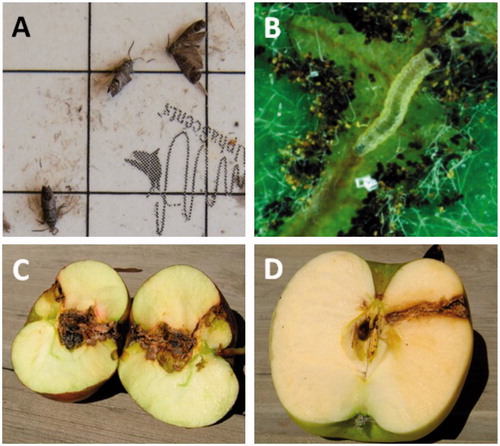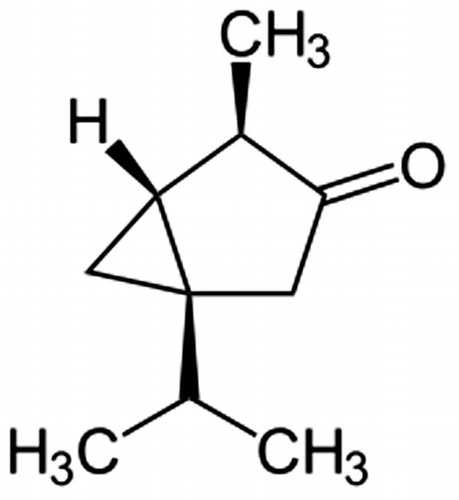Figures & data
Figure 1. The codling moth and two examples of fruit damage caused by this pest. (A) The moths immobilized on the sticky board of monitoring trap. The wingspan of the moth equals approximately 2 cm. (B) Codling moth neonate larva, about 1.5 mm long, is the invasive stage. (C) Fruit damage caused by infestation early in the season. (D) Fruit damage caused by infestation late in the season, about 30 d before harvest.

Figure 2. Chemical structure of a secondary metabolite of Artemisia arborescens “Powis Castle”, α-thujone, tested for codling moth deterrence in this study. α -Thujone exhibited weak deterrent effects, which do not explain the level of deterrent activity in A. arborescens “Powis Castle” crude extracts toward codling moth neonates, suggesting the presence of other codling moth deterrent compounds in this plant.

